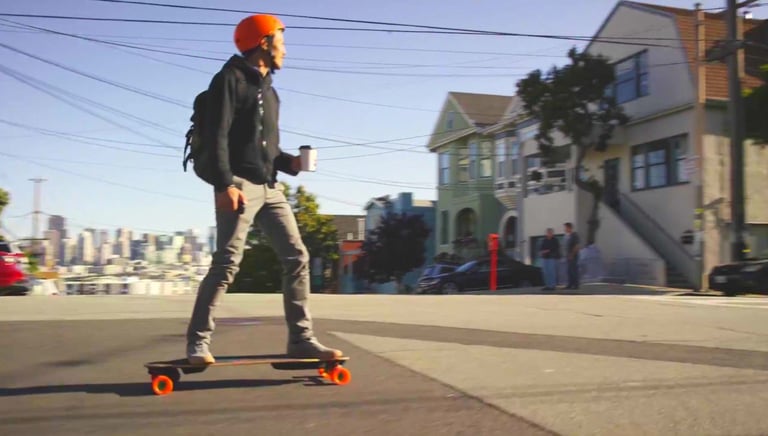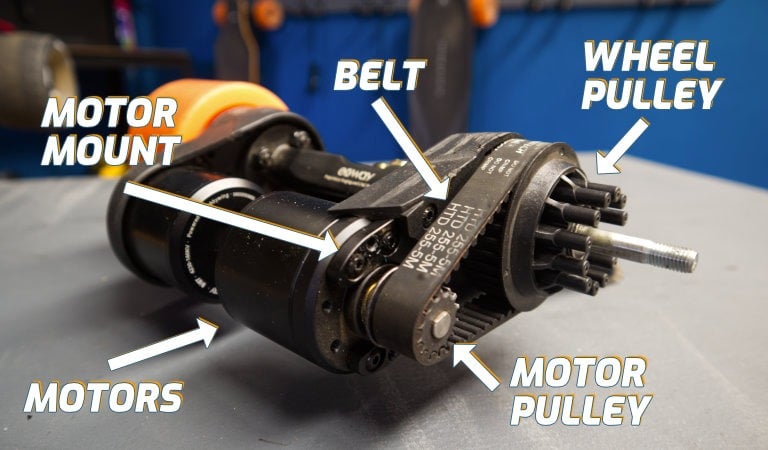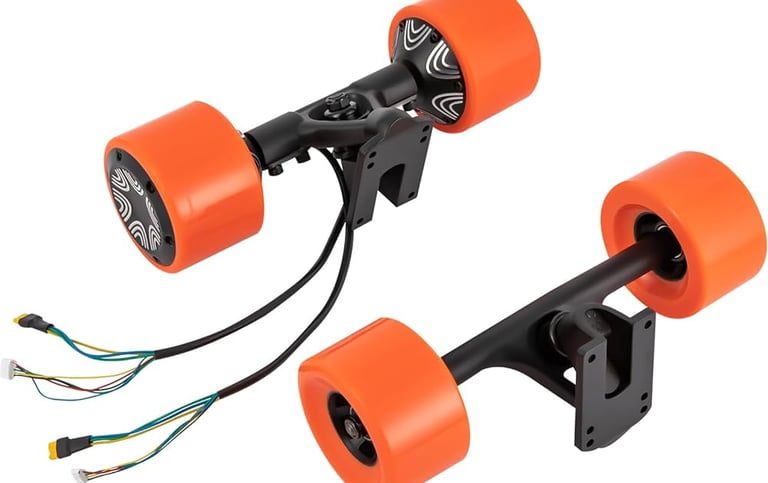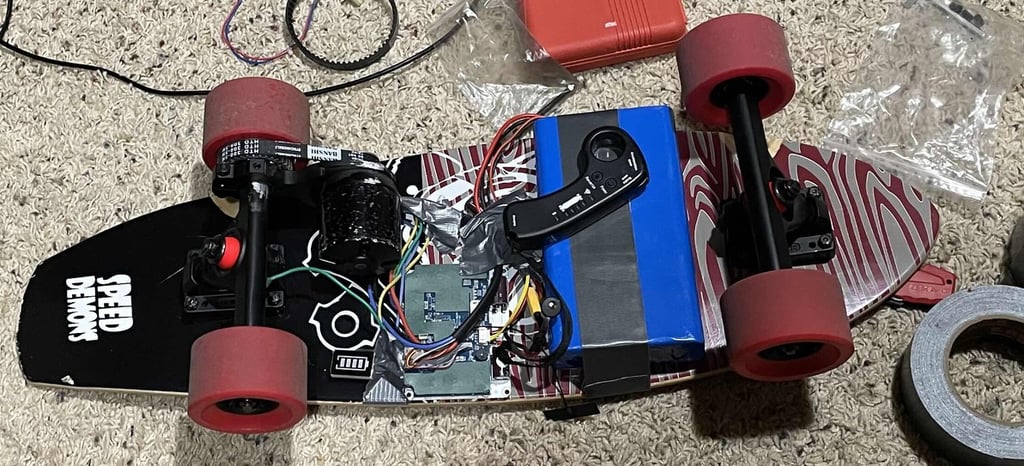DIY Electric Skateboard
Commercial electric skateboards are too expensive, so I made one myself by strapping a motor to a $7 Walmart board.


Somewhat pet friendly portable electric vehicle of choice that won't break the bank for the average college student.
Electric Skateboards are growing in popularity among students just because of how easily they make it to get around campus while bringing them into the classroom or dorm without much hassle.
Bill of Materials
Electric Skateboards commonly come in one of two drivetrains: Hub Motors or Belt-Driven




Unfortunately, commercial options are typically expensive, which is the antithesis of the college student demographic.


The solution for the average engineering student is naturally to build your own.
So here's how I did it.
But first we have to start with some product research




Hub Motors
Hub motors are where the motors are built into the wheels; this offers the advantage of being a more convenient solution, as the entire assembly comes in one package and is relatively plug-and-play.
While convenient, hub motors are generally more expensive, less customizable, and more complicated to repair if something goes wrong.
In this drivetrain configuration, the wheel is driven by a motor via a belt pulley system. This means regular cruiser wheels can be used by simply screwing a gear next to it. The belt length and gear ratio can also be changed to vary the torque.
While less convenient, belt-driven is generally cheaper and more straightforward to fix
In my design, I chose to go with the belt-driven drivetrain for the cost and customizability. I started initially with a single-driven wheel, with the ability to add another motor later on.
Product Research
After that, the rest of the materials can be acquired. Below is a BOM of everything I got.


Assembly


Finally putting it all together, the three phase motor plugs into the electronic speed controller (ESC), then the battery plugs into the ESC. This particular ESC also comes with a onboard wireless capabilities to connect to a controller.
Finally, put it all together: the three-phase motor plugs into the electronic speed controller (ESC), and the battery plugs into the ESC. This particular ESC also features onboard wireless connectivity for remote controller pairing.
